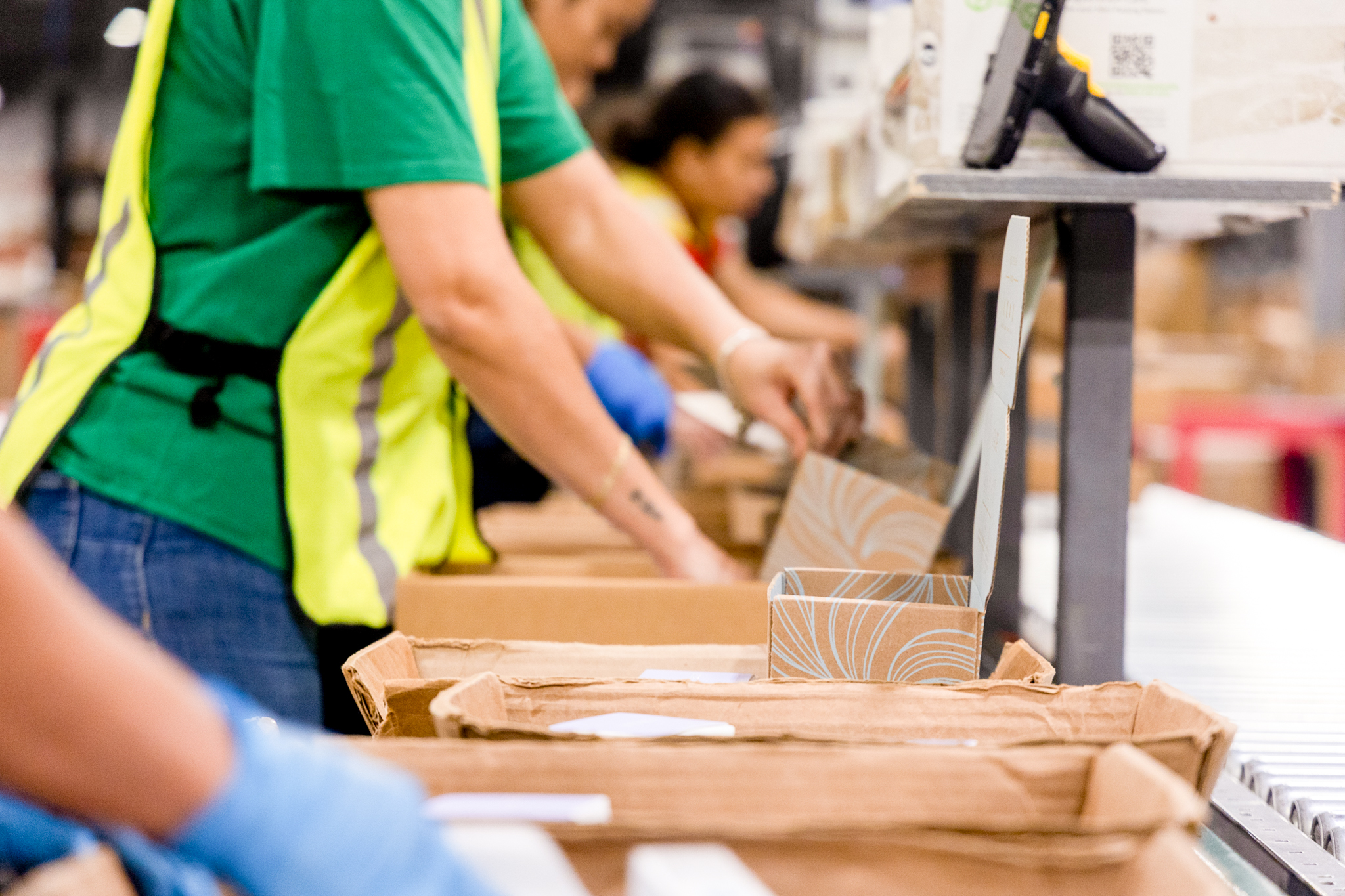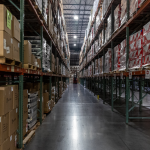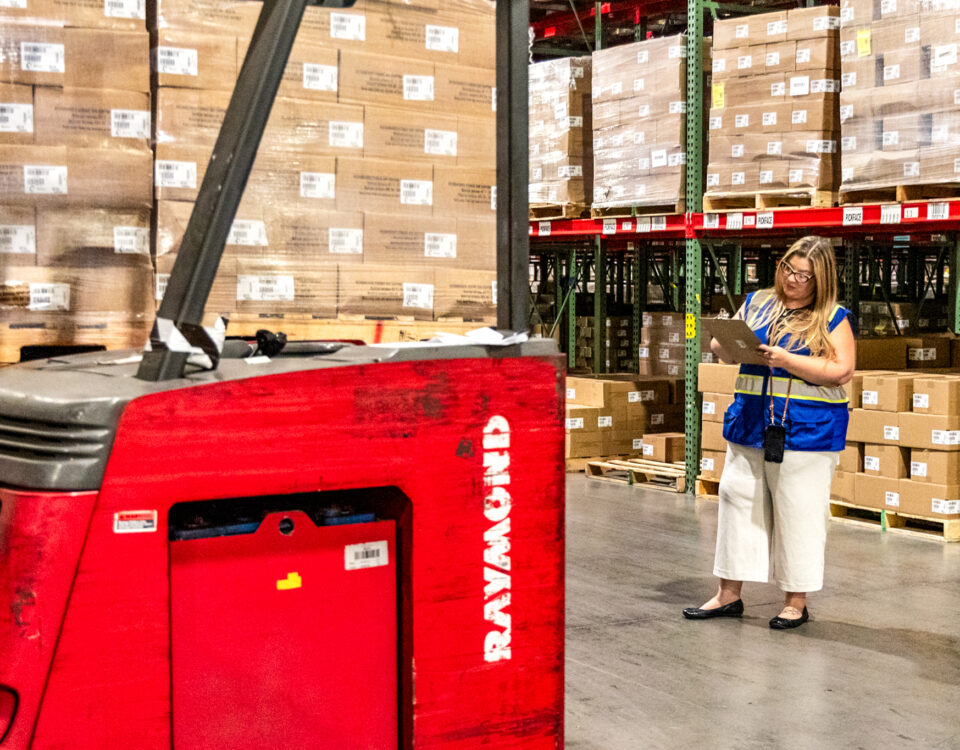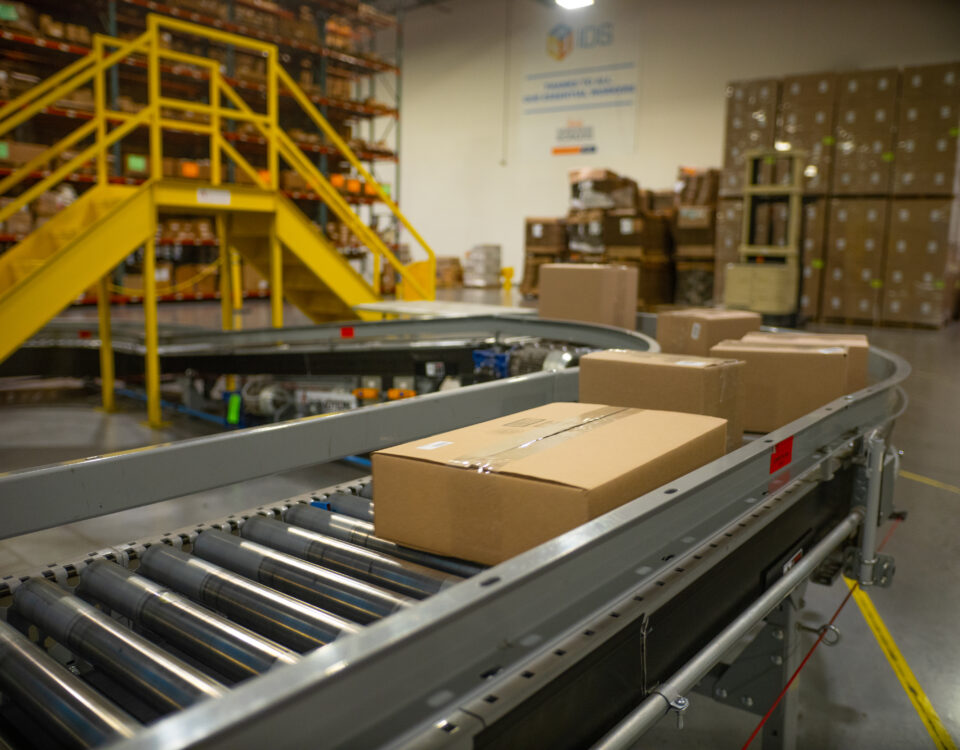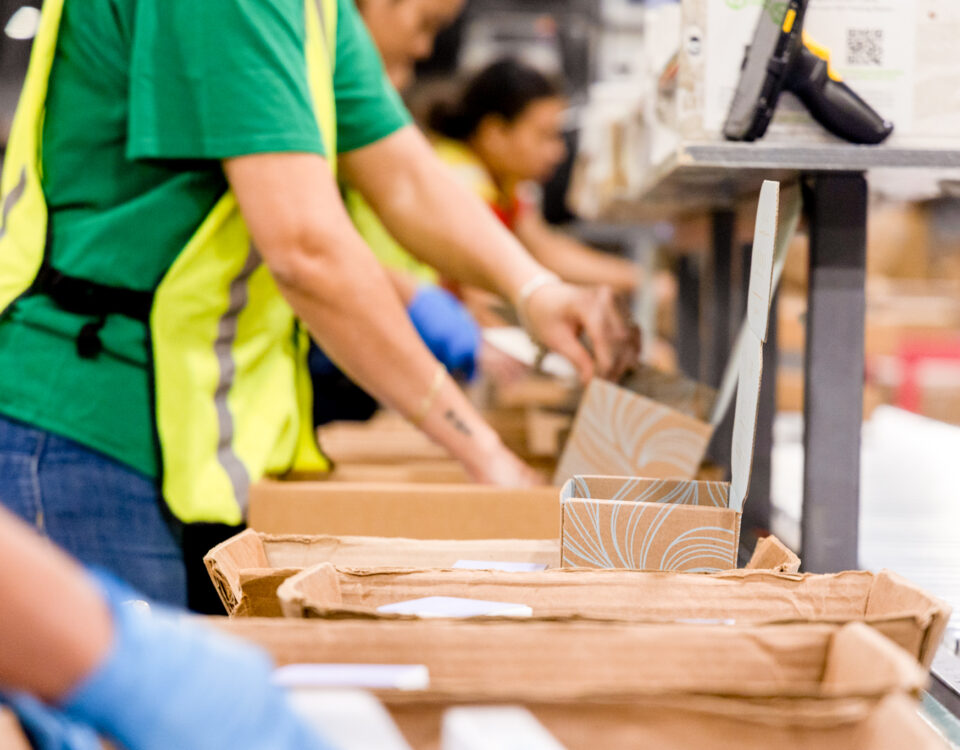Managing apparel fulfillment solutions for growing businesses isn’t just about shipping orders—it’s about staying competitive.
Whether you’re juggling seasonal trends, handling high return rates, or scaling to meet growing demand, efficient fulfillment can make or break your business.
But, as your business grows, so do the complexities. Customers want faster shipping, easier returns, and a seamless shopping experience. Because your brand reputation must remain positive—the stakes are high. So, the right fulfillment strategy is not only important, it can give you a competitive advantage.
In this blog, we’ve outlined the four key areas of critical impact when it comes to apparel fulfillment solutions for growing businesses. This will help you quickly evaluate what’s working, what needs to be fixed, and if your current 3PL provider can successfully position your brand for scalable growth.
The Four Problems Growing Apparel Brands Face & How To Fix Them.
As your apparel business grows, so do the operational challenges. Balancing customer expectations with the complexities of inventory, order fulfillment, and returns becomes increasingly difficult, especially without scalable solutions in place.
Here are the top four things that can derail a growing apparel company:
- Inventory Management
- Order Accuracy
- Returns Management
- Scalability
Problems in these key areas can add up quickly. And when they do, they create bottlenecks that slow growth and hurt customer satisfaction.
No apparel brand should have to deal with unhappy customers just because their fulfillment partner can’t keep up.
This is important. Each part of your fulfillment strategy should solve a specific pain point while preparing your business for long-term growth. Work with your 3PL partner to focus on these key areas to ensure that your brand can seamlessly scale and continue to create happy customers. Focus on these four areas for success:
1—Centralized Inventory Management
Efficient inventory management is critical. It starts with a system designed to track SKUs across multiple sizes, colors, and sales channels. You have to be able to know—at any moment—exactly how many units you have, where they’re located, and which channels are performing best.
By centralizing your inventory, you avoid overselling and ensure you’re ready for unexpected spikes in demand. Look for solutions that sync your inventory in real time across e-commerce platforms, marketplaces, and even brick-and-mortar locations. This kind of clarity keeps stock levels accurate and customers happy.
Bonus resource: Explore five proven steps to achieving more accurate apparel inventory in our free inventory blueprint download.
2—Efficient Order Fulfillment
Order fulfillment for apparel brands isn’t about speed alone. It’s about delivering the right item in the right size at the right time—every time. Implementing standardized processes like automated order picking and packing reduces human error while speeding up operations.
Consider adding quality control checkpoints to ensure that items are checked for accuracy before they leave the warehouse. Streamlined processes save time on corrections, boost efficiency, and enhance the customer experience.
3—Seamless Returns Processing
Returns are inevitable in the apparel industry, but they don’t have to be a hassle. A clear and simple returns process can turn a potential frustration into a chance to impress your customers.
The best systems allow customers to initiate returns easily online, generate prepaid return labels, and track their return status. On your side, make it easy for your team to inspect returned items, restock inventory, and issue refunds or exchanges. A streamlined process not only saves time but also shows customers you care about their experience, even when things don’t go as planned.
However, making returns too easy can encourage unnecessary returns that eat into your margins. A thoughtful balance ensures a smooth customer experience while protecting your bottom line. Look for a provider that can go beyond basic returns handling—offering services like steam cleaning, lint rolling, hang tagging, and relabeling to recover as much value as possible from returned products.
Additionally, ensure your 3PL integrates seamlessly with your returns processing software to maintain efficiency and provide extended visibility. Capturing images of returned items at inspection can help verify product condition, reduce disputes, and give you valuable insights into return trends. These capabilities make returns less of a headache and more of an opportunity to keep operations running smoothly and customer trust intact.
Bonus Resource: Returns don’t have to be a headache. Learn how to turn your returns management into a strategic asset by reading this blog.
4—Scalable Operations
Apparel fulfillment systems should grow with your business. Scalability isn’t just about handling larger order volumes—it’s also about managing the increasing complexity of SKUs and inventory as your business expands. A truly scalable solution adapts to these changes without slowing you down.
For instance, advanced warehouse management systems (WMS) can handle growing SKU counts, tracking individual items across multiple channels with precision. This ensures accuracy as your inventory diversifies and your product catalog expands. Predictive tools can help you anticipate demand, keeping your inventory levels optimized for new product launches or seasonal spikes.
Scalability also means partnering with a flexible provider who works with you to anticipate and adapt to your business’s growth. Whether you’re expanding your inventory, entering new markets, or increasing order volume, your 3PL should be ready to pivot with you—without compromising on speed or accuracy.
Fulfillment is the backbone of your apparel business, silently supporting every customer interaction. When it works, no one notices. When it fails, customers leave. The key is building a system that grows with you, protects your brand reputation, and gives you the confidence to scale.
By strategically addressing these challenges, you create a logistics foundation that evolves with your business. Your operations stay efficient, your team remains focused, and your customers stay happy—no matter how much you grow.
Ensure You’re Set Up For Future Growth
Look at your current fulfillment process. What’s working? What isn’t? Start by addressing the bottlenecks—whether it’s inventory management, shipping times, or returns. Each step you improve brings you closer to a scalable, customer-friendly system.
If you’ve discovered that your current 3PL fulfillment partner can’t meet your logistics needs, schedule a discovery call and discover why building a custom logistics plan will allow you to adapt to any promotion, growth strategy, or market change that comes your way.



